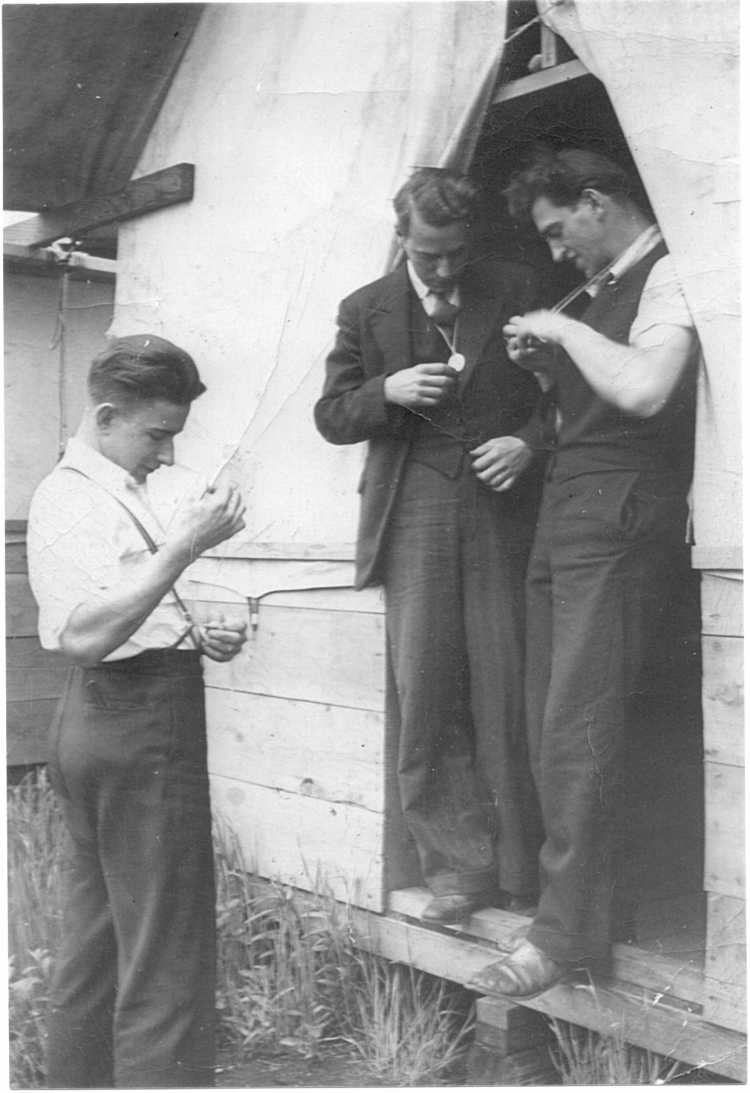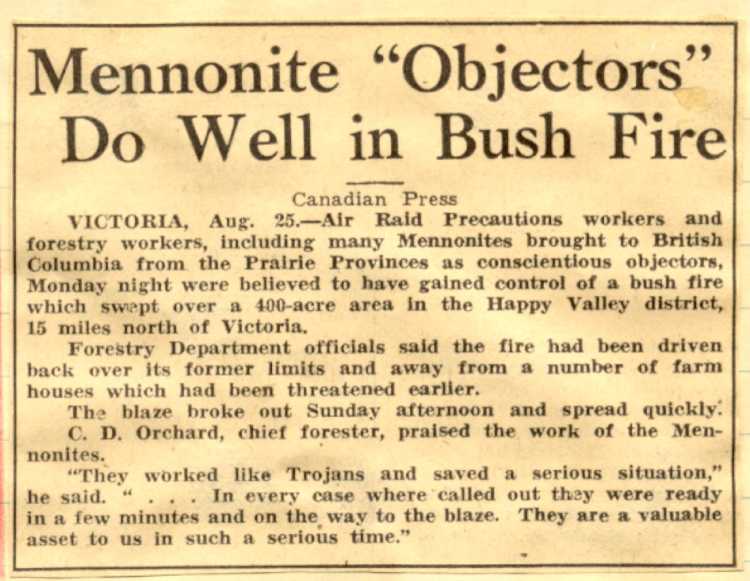Page
1 | Page 2 | Page
3 | Page 4 | Back to Work Page
Fire
fighters had to be vigilant at all times. Fires could start at any
time. Jake Friesen and his crew were on high alert during the most
dangerous periods.
“The
fire season which was considered to be most critical during the
hot months of summer had been relatively free of major fires.
However, in fall it was a different story. We had fires galore.
Two things were mainly responsible for these fires. According
to law, lumber companies were required to burn off the slash (branches
and bark) once an area has been logged off. Hunters often tossed
away their cigarettes carelessly or failed to properly extinguish
camp fires that they had lit while waiting for daylight so that
hunting could begin or to heat water for a cup of coffee.”
“Fire
fighting consisted mainly of building a fire guard around a fire
to keep it from spreading and then patrolling it to watch for
possible jumps across the fire guard. Only once did we engage
in fighting a fire that had the potential of creating hazardous
or dangerous circumstances. One hot and windy day a fire had got
into an area of second growth of timber and was quickly burning
out of control. If it had not been for a shift in the wind, who
knows what might have happened.” [ASM, 290-292]
Fire
fighting was one of the COs' most urgent duties. A summary of CO
work in the winter of 1942-1943 summarizes the importance of their
presence:
“The
Alternative Service Workers extinguished or assisted on 89 fires
in the Vancouver Forest District. Exceedingly satisfactory results
marked their efforts on outbreaks attacked while still small.
These crews attacked 72 small fires (1 acre or less) with such
success that the average spread per fire was only ¼ acre.
Any one of these fires was potentially a destroyer which could
have gained 4-inch [10 cm] headlines …. This is a real testimony
for well-trained and equipped suppression crews standing by on
the alert in the emergency.” [ASM, 286]
 |
| Examining fire fighting identification tags at Green Timbers.
These tags would be used to identify bodies if COs died in
a fire. David Jantzi far right. |
 David Jantzi worked in the camps as a fire fighter, tree planter
and snag faller. One of the hardest days was when he had to
walk 10 miles up a mountain carrying firefighting equipment to fight
a fire.
David Jantzi worked in the camps as a fire fighter, tree planter
and snag faller. One of the hardest days was when he had to
walk 10 miles up a mountain carrying firefighting equipment to fight
a fire.
Minister
Gray used an example of the COs efficient fire fighting in a letter
to Justice A.M. Manson, Chairman of the Mobilization Board, Division
“K”.
“By
way of illustration in this regard, it might be noted that the
average elapsed time between report of a fire and departure of
a fully equipped crew from the trained camps last summer was less
than three minutes. A surprise test of a trained “stand-by” crew
gave the following results:
Test
fire started
3:00 pm
Smoke
reported by lookout
3:03 pm
Crew
started for fire
3:05 pm
Arrived
at fire (11 miles [18 km] by road) 3:22
pm
Fire
extinguished
3:27 pm
Crew
arrived back at camp
3:54 pm
This
‘preparedness feature' constitutes the principle value of these
camps and it cannot be compensated for under any other manpower
plan…. They [alternative service workers] have served a function
of great national importance and will continue to do so in these
camps. The need is as urgent as ever and they cannot be replaced.”
[ASM, 287]

Page
1 | Page 2 | Page
3 | Page 4 | Back to Work Page |


